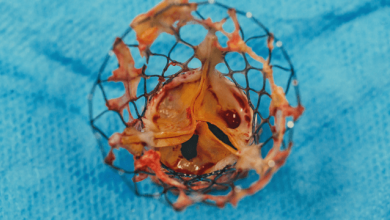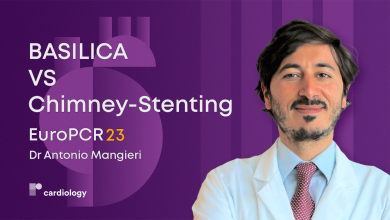Search results
Author(s):
Akshyaya Pradhan
,
Monika Bhandari
,
Pravesh Vishwakarma
,
et al
Added:
3 years ago
Author(s):
Gabriel Torres-Ruiz
,
Nuria Mallofré-Vila
,
Paola Rojas-Flores
,
et al
Added:
4 months ago
Author(s):
Alda Huqi
,
Giacinta Guarini
,
Doralisa Morrone
,
et al
Added:
3 years ago
Myocardial revascularisation in patients with stable chronic angina is performed with the aim of reducing cardiovascular death, reducing myocardial infarction (MI) and relieving angina symptoms. However, contrary to expectations, modern therapy with percutaneous coronary intervention (PCI) has not had a significant impact on hard outcomes.1–5 Indeed, as also summarised in a recently published…
View more
Author(s):
Antonio FB de Azevedo Filho
,
Tarso AD Accorsi
,
Henrique B Ribeiro
Added:
2 years ago
Author(s):
Ricardo Seabra-Gomes
,
Jorge Ferreira
Added:
3 years ago
Cardiogenic shock (CS) is a state of systemic tissue hypoperfusion due to cardiac failure in the presence of adequate intravascular volume.1 Left ventricular pump failure leading to CS remains one of the most serious and challenging conditions over time in cardiology and is still the most common cause of hospital mortality associated with myocardial infarction (MI).2 This review focuses on CS in…
View more
Author(s):
Sumanth Khadke
,
Jovana Vidovic
,
Vinod Patel
Added:
3 years ago
Author(s):
Valérie E Stegehuis
,
Gilbert WM Wijntjens
,
Tadashi Murai
,
et al
Added:
3 years ago
The emphasis in ischaemic heart disease (IHD) diagnosis has historically been directed towards the identification of epicardial coronary stenosis by selective coronary angiography, and its management by percutaneous coronary intervention (PCI) or coronary bypass graft surgery. Over the past two decades, the application of coronary physiology techniques to identify the haemodynamic severity of…
View more
Author(s):
Iana Simova
Added:
3 years ago
Coronary flow velocity reserve (CFVR) represents the ratio between maximal (stimulated) coronary blood flow, induced by using a coronary vasodilator, and baseline (resting) blood flow (see Figure 1). As a ratio it is a dimensionless variable. It could be measured with different tools – some of them, such as intracoronary Doppler flow wire and coronary sinus thermodilution, are invasive methods…
View more
Author(s):
Frank J Criado
,
Catherine Gallagher
Added:
3 years ago
Treatment of severe carotid artery stenosis to prevent stroke is arguably the most significant and perhaps the best vascular reconstructive operation in the speciality as a whole. It is nothing short of an icon for evidence-based medicine, but it is not without challenges. An estimated 20% of carotid endarterectomy (CEA) procedures are done on so-called 'high-risk' patients, mostly related to…
View more
Author(s):
Antonio Mangieri
Added:
11 months ago
EuroPCR 23 – Dr Antonio Mangieri (Humanitas Research Hospital, IT) joins us to discuss the data from a study that compared BASILICA and Chimney stenting in high-risk TAVR patients.
The study found similar efficacy and outcomes between BASILICA and Chimney stenting at one year. BASILICA may reduce complications associated with ostial stenting and does not increase the risk of stroke with cerebral…
View more














